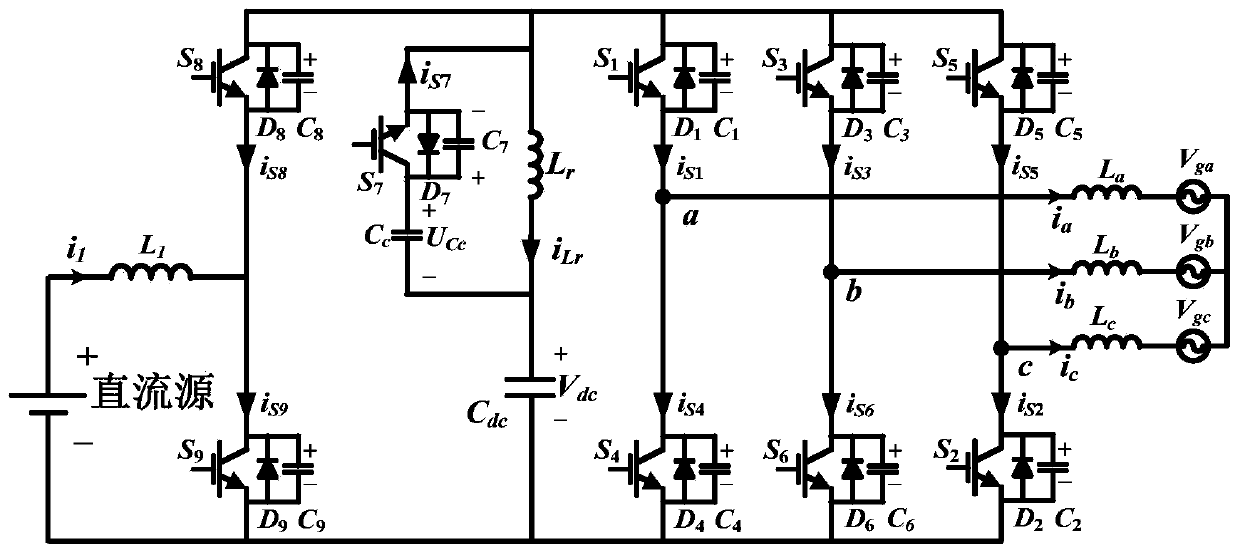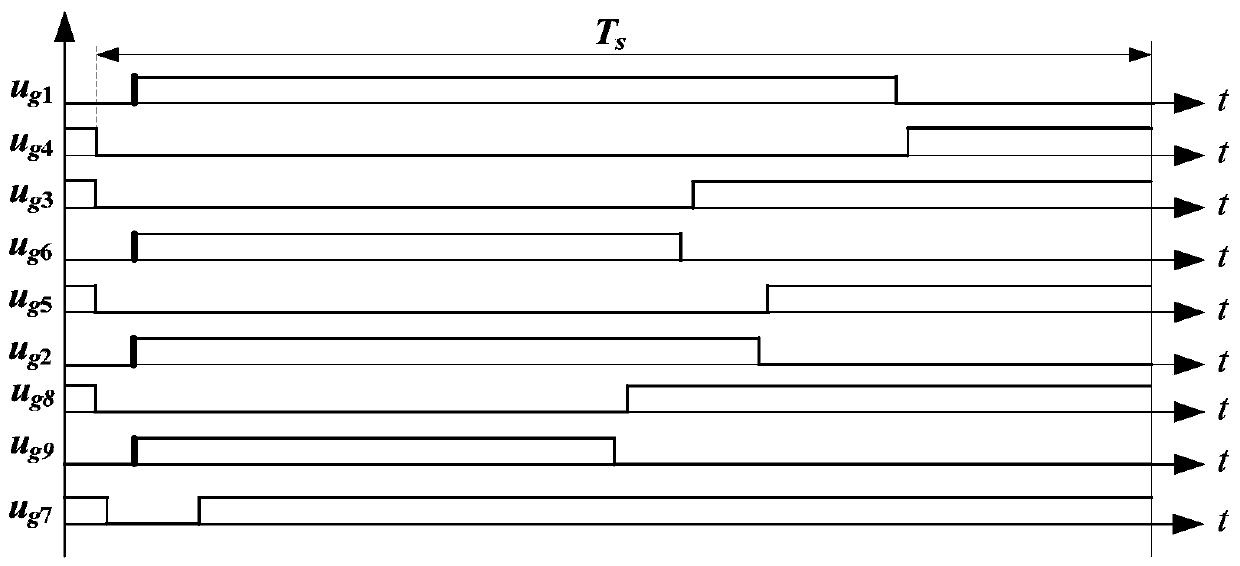Two-stage three-phase soft-switching current transformer
A soft switching and converter technology, applied in the direction of converting DC power input to DC power output, AC power input converting to DC power output, instruments, etc. It can achieve the effect of high circuit efficiency, low switching loss, and improved power density.
- Summary
- Abstract
- Description
- Claims
- Application Information
AI Technical Summary
Problems solved by technology
Method used
Image
Examples
Embodiment Construction
[0013] The present invention will be described in detail below in conjunction with specific embodiments. The following examples will help those skilled in the art to further understand the present invention, but do not limit the present invention in any form. It should be noted that those skilled in the art can make several modifications and improvements without departing from the concept of the present invention. These all belong to the protection scope of the present invention. The present invention will be described in detail below in conjunction with the accompanying drawings.
[0014] refer to figure 1 , the two-stage three-phase soft-switching converter circuit includes an AC side filter inductor L a , L b , L c ; DC input side inductance L 1 ; Four groups of half-bridge arms; DC side capacitor C dc ; and a group consisting of a parallel diode D 7 The auxiliary switch tube S 7 , Resonant inductance L r , clamp capacitor C c The auxiliary resonant branch formed...
PUM
 Login to View More
Login to View More Abstract
Description
Claims
Application Information
 Login to View More
Login to View More - R&D
- Intellectual Property
- Life Sciences
- Materials
- Tech Scout
- Unparalleled Data Quality
- Higher Quality Content
- 60% Fewer Hallucinations
Browse by: Latest US Patents, China's latest patents, Technical Efficacy Thesaurus, Application Domain, Technology Topic, Popular Technical Reports.
© 2025 PatSnap. All rights reserved.Legal|Privacy policy|Modern Slavery Act Transparency Statement|Sitemap|About US| Contact US: help@patsnap.com



